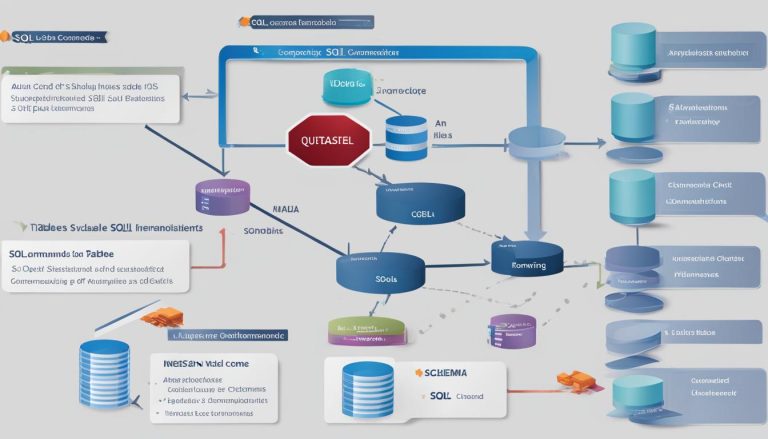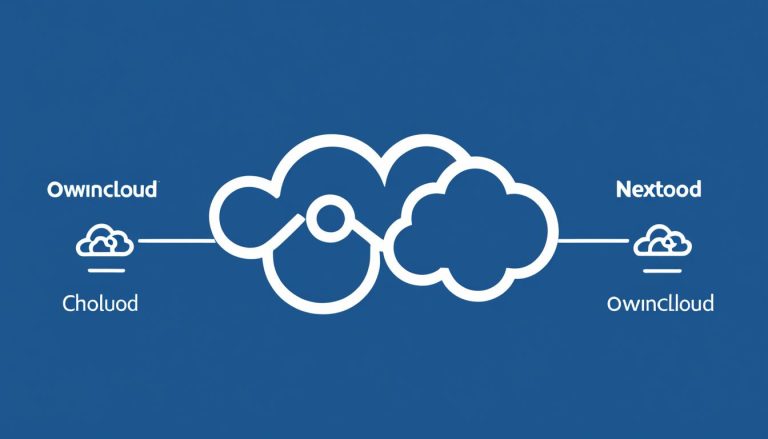Understanding What is a Database Index Explained
Have you ever wondered how databases retrieve information so quickly? The secret lies in a powerful tool called a database index. In this article, I will explain what a database index is and how it works to enhance search speed and improve database performance.
An index in a database is like an index in the back of a book. It serves as a pointer to data in a table, allowing for quick and efficient access. Just as an index helps you find specific information in a book without reading every page, a database index helps locate data without scanning the entire table.
Indexes are lookup tables that store essential information to speed up data retrieval. In a database, data is organized in rows within tables, and each row has a unique key stored in an index. This unique key enables fast lookup and retrieval of specific data.
Not only can indexes be created for key values, but they can also be created for non-key values to quickly search for specific data. The syntax for creating an index may vary depending on the database, but it typically involves using the CREATE INDEX statement.
Although indexes are not visible to users, they significantly improve search and query performance. However, it’s important to note that updating a table with indexes takes more time than updating a table without them. Therefore, it’s crucial to create indexes only on frequently searched columns to optimize database performance.
Understanding what a database index is and how it functions is essential for optimizing database performance and improving search speed.
Key Takeaways:
- A database index is a powerful tool used to speed up queries and enhance search speed.
- It serves as a pointer to data in a table, similar to an index in the back of a book.
- Indexes are lookup tables that efficiently store data for quicker retrieval.
- Data in a database is stored in rows organized into tables, and each row has a unique key stored in an index.
- Indexes can be created for non-key values to quickly lookup specific data.
Importance and Benefits of Database Index
Database indexes play a pivotal role in enhancing database performance and optimization. They enable quick access to specific pieces of information without reading all data in a table, resulting in improved query performance. This is especially important in large databases that contain terabytes or petabytes of data. By allowing faster retrieval of data, indexes contribute to efficient database performance in transactional environments.
Think of a database index as an index in a book. It significantly reduces the time required to find specific information. Moreover, indexes help in organizing and ordering the data, making it easier to search and scan for specific information.
Properly optimized indexes can lead to faster response times for queries, thereby improving overall database performance. They help in optimizing search and query operations by efficiently storing and retrieving data. This translates to enhanced user experience and improved efficiency in handling large volumes of data.
However, it is essential to note that unnecessary indexes can consume additional storage space and slow down insert, update, and delete operations. Therefore, it is important to strike the right balance between index usage and performance optimization. Properly understanding the importance and benefits of database indexes is crucial for effective database management and optimization.
Indexes are like the backbone of a database, providing the framework for quick and efficient access to data. They ensure that the database can handle complex queries and transactions with ease, ultimately resulting in a more reliable and responsive system.
To further illustrate the significance of database indexes, let’s take a look at a comparison table:
| Without Database Indexes | With Database Indexes |
|---|---|
| Slow query performance | Improved query performance |
| Scanning entire table for data retrieval | Quick data retrieval based on indexed columns |
| Inefficient use of resources | Optimized resource utilization |
| Difficulty in managing and searching large datasets | Efficient management and search capabilities for large datasets |
Wrapping Up
Database indexes are invaluable tools for optimizing database performance. By providing quick access to data and improving query performance, indexes ensure efficient database management and enhance user experience. However, it is crucial to carefully consider the usage of indexes to avoid unnecessary storage consumption and decreased performance for data modification operations. Understanding the importance and benefits of database indexes paves the way for effective database optimization and performance improvement.
Types of Database Index
Database indexes come in various types, each serving specific purposes and catering to different use cases. Understanding the different types of database indexes is crucial for optimizing query performance and selecting the appropriate index type for specific scenarios.
B-Tree indexes: The most commonly used indexes, B-Tree indexes store values in a hierarchical structure for efficient data retrieval. They organize data lexicographically, allowing for quick access and range-based searches.
Bitmap indexes: Suitable for columns with a small number of distinct values, bitmap indexes store a bitmap for each possible value, indicating which rows contain that value. They are particularly efficient for equality-based searches.
Hash indexes: Hash indexes are designed for equality-based queries. They store data in a hash table, enabling fast access to specific values based on their hash keys. They are ideal for scenarios where the exact value is known.
Clustered indexes: Clustered indexes organize data in the order of the index key. They physically sort the data in the table, allowing for efficient range-based searches. Only one clustered index can be created per table.
Non-clustered indexes: Unlike clustered indexes, non-clustered indexes separate data storage from the index structure. They can be created on multiple columns and enable efficient searching and sorting of data without physically reorganizing the table. They are particularly useful for covering queries.
Unique indexes: Unique indexes ensure the uniqueness of values in a column or set of columns. They prevent the insertion of duplicate values and enhance data integrity.
Partial indexes: Partial indexes are created based on a filter condition, indexing only a subset of data that meets the specified condition. They optimize query performance by excluding irrelevant data from the index.
Covering indexes: Covering indexes include additional columns in the index structure to cover specific query requirements. By including all necessary data in the index itself, they reduce the need for accessing the actual table, improving overall search performance.
Summary of Database Index Types
| Index Type | Description |
|---|---|
| B-Tree indexes | Store values in a hierarchical structure for efficient data retrieval. |
| Bitmap indexes | Suitable for columns with a small number of distinct values, storing a bitmap for each possible value. |
| Hash indexes | Used for equality-based queries, where data is stored in a hash table for quick access. |
| Clustered indexes | Organize data in the order of the index key, physically sorting the data in the table. |
| Non-clustered indexes | Separate data storage from the index structure, allowing multiple indexes on a single table. |
| Unique indexes | Ensure the uniqueness of values in a column or set of columns. |
| Partial indexes | Created based on a filter condition, indexing only a subset of data that meets the condition. |
| Covering indexes | Include additional columns in the index to cover specific query requirements, reducing the need for accessing the actual table. |
Understanding the different types of database indexes is essential for optimizing query performance and selecting the appropriate index type based on specific requirements.
Implementation and Usage of Database Index
The implementation of a database index relies on the database engine being used. It typically involves using the CREATE INDEX statement to create the index. The syntax may vary depending on the specific database system.
When creating an index, you need to specify the index name, table name, and the column(s) to be indexed. This allows the database engine to efficiently retrieve and organize the data.
Once the index is created, it is automatically maintained by the database engine. Any changes made to the data are reflected in the index, ensuring it remains up-to-date.
The usage of a database index involves selecting the appropriate column(s) to index based on the query requirements. Indexes are created on columns that are frequently searched against to improve search and query performance.
It is important to consider the trade-offs associated with creating indexes. While they enhance query performance, they also consume additional storage space and can slow down insert, update, and delete operations.
Regular monitoring and maintenance of indexes are necessary to ensure optimal performance. This involves analyzing query patterns, identifying unused or duplicate indexes, and making necessary adjustments to optimize the database index usage.

Understanding the implementation and usage of database indexes is crucial for effectively utilizing this feature to improve query performance. With the appropriate implementation and careful optimization, database indexes can significantly enhance the efficiency and speed of data retrieval operations.
Conclusion
In conclusion, a database index is a powerful tool that enhances search speed and improves database performance. By serving as lookup tables and organizing data for quick retrieval, indexes play a crucial role in optimizing query performance.
Creating appropriate indexes on frequently searched columns can significantly reduce response times and enhance overall database efficiency. However, it’s essential to carefully consider the trade-offs and limitations of database indexes, such as increased storage usage and slower update operations. Regular monitoring and maintenance of indexes are necessary for optimal performance.
Understanding the different types of indexes and their implementation and usage is vital for effectively utilizing this feature and maximizing database performance and optimization. By leveraging the capabilities of database indexes, organizations can ensure faster query execution and improved user experience.
FAQ
What is a database index?
A database index is a powerful tool used in a database to speed up queries and enhance search speed. It is a pointer to data in a table, similar to an index in the back of a book.
Why is a database index important?
A database index is crucial for optimizing database performance. It improves query performance by enabling quick access to specific pieces of information without reading all data in a table. Indexes allow faster retrieval of data, especially in large databases with terabytes or petabytes of data.
What are the types of database indexes?
There are different types of database indexes, each serving specific purposes and use cases. Some of the common types include B-Tree indexes, bitmap indexes, hash indexes, clustered indexes, non-clustered indexes, unique indexes, partial indexes, and covering indexes.
How is a database index implemented and used?
The implementation of a database index depends on the database engine being used. The syntax for creating an index may vary, but it usually involves using the CREATE INDEX statement. Indexes are created on columns frequently searched against to improve search and query performance.
- About the Author
- Latest Posts
Mark is a senior content editor at Text-Center.com and has more than 20 years of experience with linux and windows operating systems. He also writes for Biteno.com






